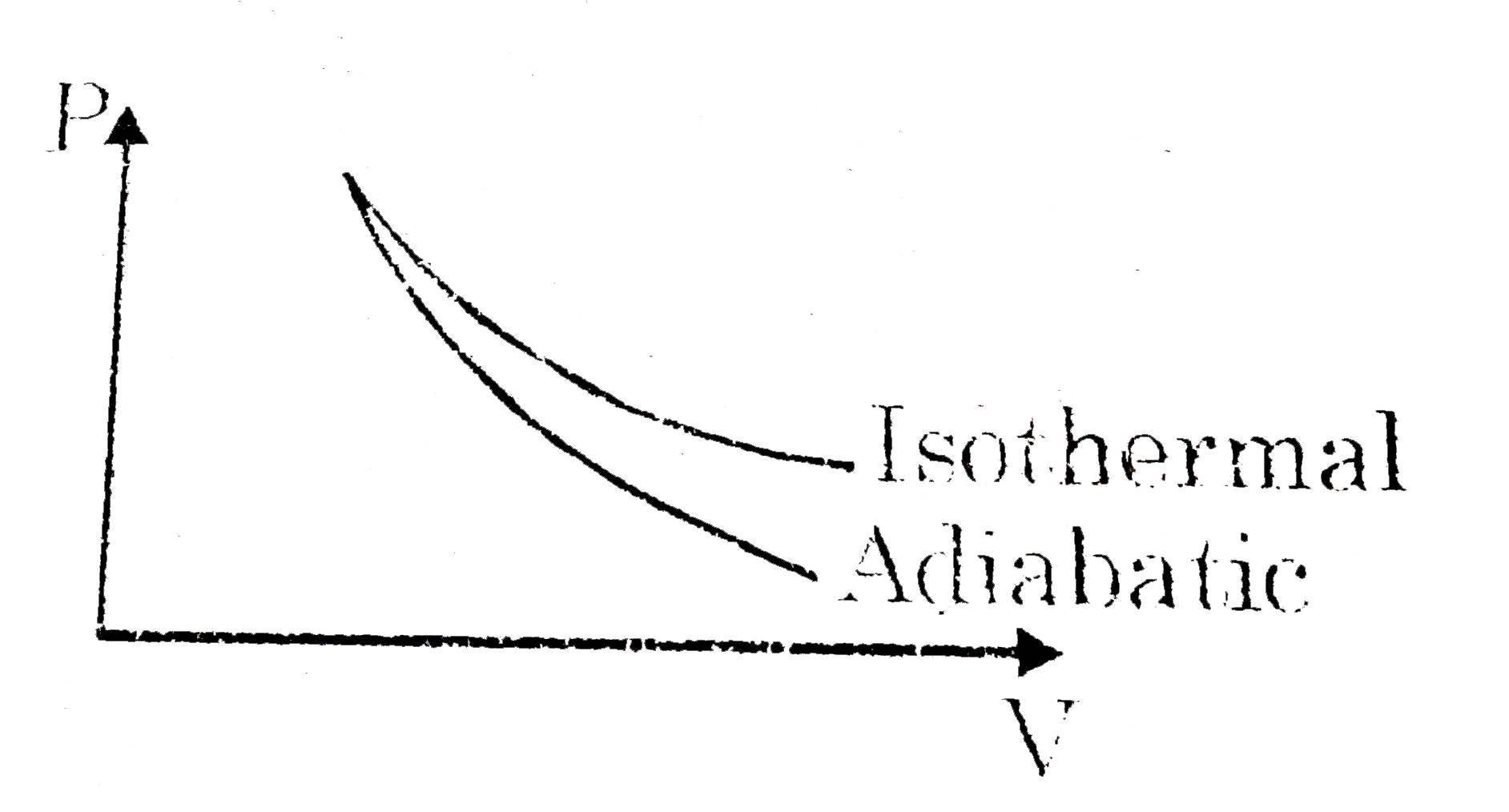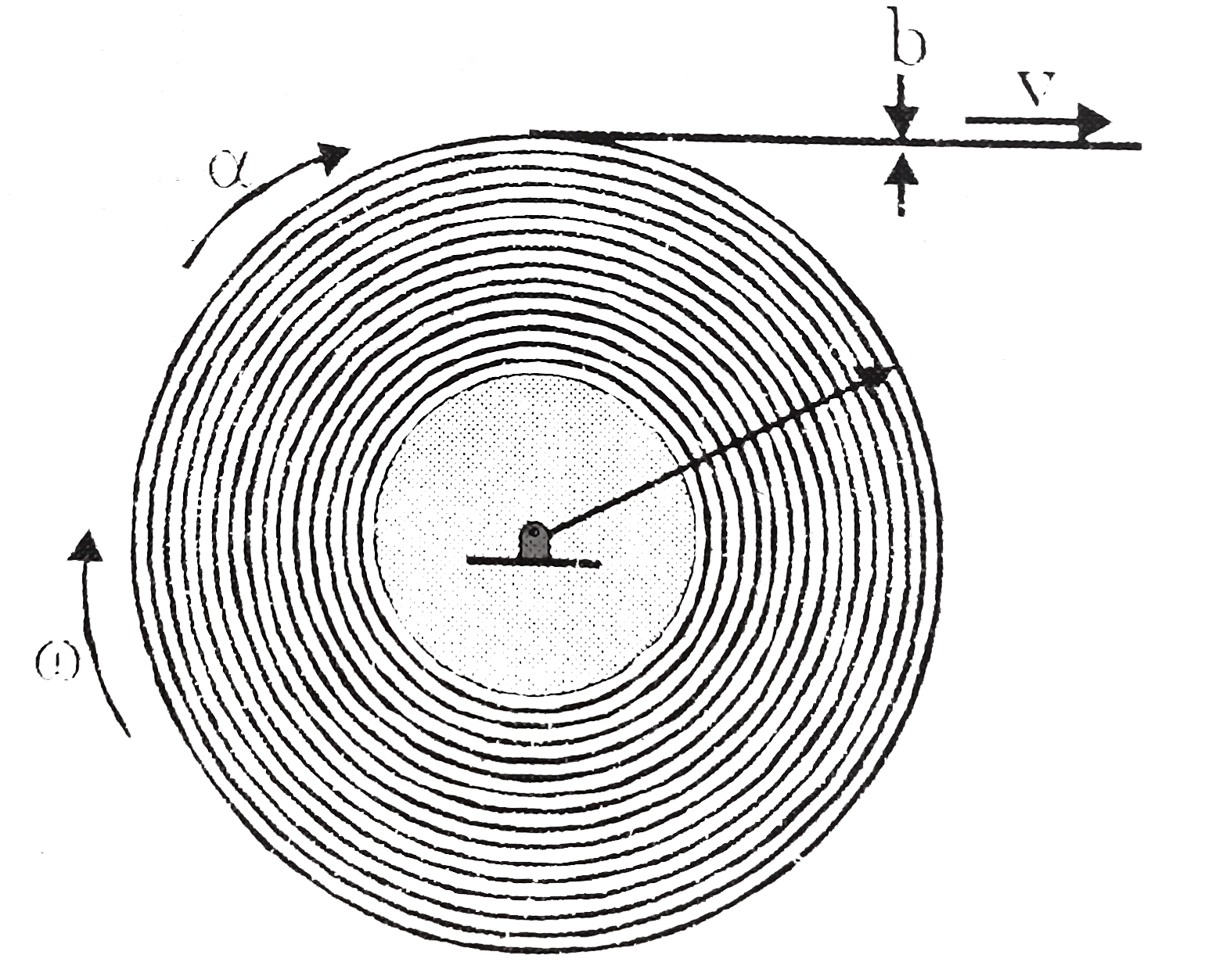Two gases have the same initial pressure, volume and temperature. They expand to the same final volume, one adiabatically and the other isothermallySolution in Gujrati
In case of isothermal process, final pressure is greater.
In case of adiabatic process, work done is greater.
In case of adiabatic process, work done is greater.
In case of isothermal process, work done is greater/
The correct Answer is:A, D

(Pf)isothermal.>(Pf)Adiabatic
(Tf)isothermal.>(Tf)adiabatic
Area under isothermal curve is move than area under adiabatic curve.
⇒Wisothermal.>Wadiabatic
Topper's Solved these Questions
- TEST PAPERSBOOK - ALLEN CHAPTER - TEST PAPERSEXERCISE - part-2 physics
73 Videos
- TEST PAPERSBOOK - ALLEN CHAPTER - TEST PAPERSEXERCISE - part-2 physic
48 Videos
- TEST PAPERSBOOK - ALLEN CHAPTER - TEST PAPERSEXERCISE - PAPER 3
92 Videos
- TEST PAPER 4BOOK - ALLEN CHAPTER - TEST PAPER 4EXERCISE - PHYSICS
45 Videos
- UNIT & DIMENSIONS, BASIC MATHS AND VECTOR BOOK - ALLEN CHAPTER - UNIT & DIMENSIONS, BASIC MATHS AND VECTOR EXERCISE - Exercise (J-A)
7 Videos
Similar Questions
A bead is connected with a fixed disc of radius R by an inextensible massless string in a smooth horizontal plane. If the bead is pushed with a velocity v0 prependicular to the string, the bead moves in a curve and consequently collapses on the disc. Then

View SolutionIn a continuous printing process paper is drawn into the press at a constant speed v. Denoting by 'r' the radius of the paper roll at any given time and by 'b' the thickness of the paper. What is the angular acceleraion of the paper roll?

View SolutionA satellite S is moving in an elliptical orbit around the earth. The mass of the satellite is very small compared to the mass of the earth.
View SolutionTwo forces, each of magnitude F have a resultant of the same magnitude F. The angle between the two forces is
View SolutionMatch List I with List II and select the correct answer using the codes given below the lists :

View SolutionTwo sample A and B of a gas initially at the square at the same pressure and temperature are compressed from volume V to V//2 (A isothermally and B adiabatically). The final pressure of A is
View SolutionTwo gases have the same initial pressure, volume and temperature. They expand to the same final volume, one adiabatically and the other isothermally
View SolutionTwo identical samples of gases are allowed to expand to the same final volume (i) isothermally (ii) adiabatically. Work done is
View SolutionTwo gases have the same initial pressure P, volume V and temperature T. They both expand to the same volume from V to 2V, one adiabatically and the other isothermally. Plot P-V diagram for the given situation and hence explain. In which case is the final temperature greater?
View SolutionTwo sample A and B of a gas initially at the same pressure and temperature are compressed from volume V to V/2 (A isothermally and B adiabatically). The final pressure of A is
View SolutionTwo samples A and B of a gas are initially at the same temperature and pressure, are compressed from volume V to V/2 (A isothermally and adiabatically), then the final pressure of :
View SolutionTwo samples A and B of a gas are initially at the same temperature and pressure are compressed from volume V1 to V/2 (A isothermally and B adiabatically). The final pressure is
View SolutionTwo gases have the same initial pressure, volume and temperature. They expand to the same final volume, one adiabatically and the other isothermally
View SolutionTwo gases have the same initial pressure, volume and temperature. They expands to the same final volume, one adiabatically and the other isothermally.
View SolutionTwo gases have the same initial pressure, volume and temperature. They expand to the same final volume, one adiabatically and the other isothermally.
View SolutionTwo gases have the same initial pressure, volume and temperature. if the two gases are compressed to the same final volume
View Solution
